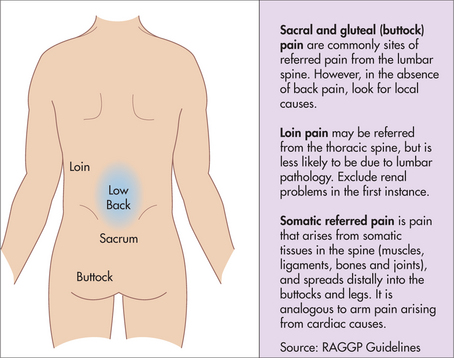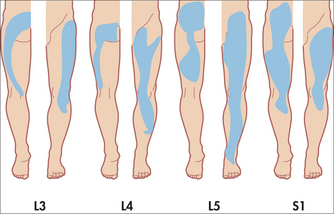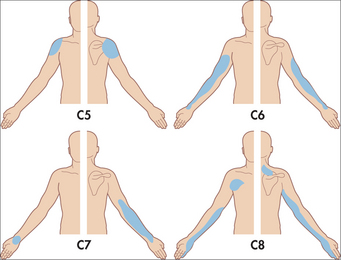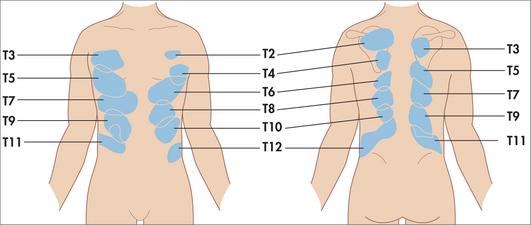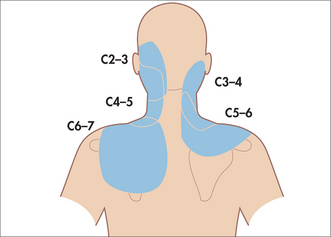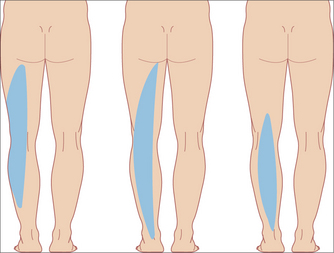chapter 34 Musculoskeletal medicine
INTRODUCTION AND OVERVIEW
Musculoskeletal medicine (MSM) is that branch of medicine dealing with the conservative management of disorders of the musculoskeletal system, including the muscles, aponeuroses, joints and bones of the axial and appendicular skeletons, and those parts of the nervous system associated with them. These disorders represent the most common cause of disability in most countries across all age groups1 and are the third most common reason for presentation to general practice.2 The direct and indirect costs of this burden are in the $15 billions per annum.3
Yet, paradoxically, undergraduate and postgraduate education in MSM is at best elementary. The need for MSM training in medical schools and hospitals has been well established.4 Currently in Australia there is no public MSM outpatients department (OPD) hospital clinic, which differs from our European and American colleagues, who have vibrant systems in place. For instance, osteopathy and musculoskeletal medicine special-interest doctors are recognised in the United Kingdom, musculoskeletal physicians are recognised in Europe and the United States has osteopathic MDs. Historically in Australia it has been left to the allied healthcare professionals and alternative healthcare practitioners to absorb much of the demand for musculoskeletal (MS) management. The medical profession has been slow to embrace MSM, but has a vital role to play. The optimal management of MSM conditions epitomises the need for an integrated approach from practitioners knowledgeable in the biopsychosocial approach to management. General practitioners with postgraduate MS training can work collaboratively with other healthcare providers to minimise pain and optimise function for patients.
One of the most common MS disorders seen by healthcare practitioners in Australia is spinal pain. Persistent back pain is by far the most common reason for chronic MS patient encounter in Australian general practice, followed by knee, shoulder and neck.5
LOW BACK PAIN
DEFINITIONS
| Somatic referred pain | Radicular pain |
|---|---|
| Due to spread of pain from deep spinal tissues (including muscles) | Due to chemical or mechanical irritation of nerves |
| Back pain worse than leg pain, which may be bilateral | Unilateral leg pain worse than back pain |
| Pain concentrates proximally in buttock and thigh, but may spread below knee | Pain concentrates distally, running into the lower limb, usually extending below the knee |
| Deep, dull aching, expanding pressure-like quality | Sharp, shooting, electric quality, often deep and superficial |
| Vague location, varies over time, ill-defined distribution | Pain runs along defined narrow band in dermatome distribution |
| Poorly defined paraesthesia may be present | Numbness and paraesthesia in dermatomal distribution |
| Normal reflexes and power (if abnormal, further assessment is needed) | Reflexes may be reduced or absent; motor weakness may be present |
EPIDEMIOLOGY
The lifetime prevalence of acute LBP is about 70%,16 with the cumulative lifetime prevalence of episodes lasting more than 2 weeks being 14%.17 In Australia, back complaint is the sixth most common reason for presentation to a general practitioner.2
Data on the natural history of LBP are variable but instructive when closely analysed. A commonly quoted statement is that, with treatment, ‘90% of patients recover within 2 months’.18 This may be true when follow-up is only for 4 weeks.18 More-rigorous studies with 12-month follow-up reveal a different picture.19,20 Around 80% of patients remain disabled to some extent at 12 months, with 10–15% highly disabled. These studies paint a picture of recovery followed by relapse. In general, a patient’s status at 2 months post presentation reflects their status at 12 months.
An Australian study of acute LBP patients without a compensation claim managed with evidence-based guidelines revealed that 70% can expect to recover and stay recovered at 12 months, with a low risk of recurrence.21
HISTORY
EXAMINATION
Although physical examination of LBP patients will rarely allow a patho-anatomic diagnosis to be made, it remains an extremely valuable tool. Its strength lies in the opportunities it opens (Box 34.4). A confidently performed physical examination in association with meaningful dialogue is an important step in the overall management.
Following the orthopaedic model of ‘look, move and feel’ is the standard approach. Initial inspection allows a record of asymmetry, pain behaviour, gait and skin lesions. A knowledge of surface landmarks (Fig 34.7) adds more meaning to the descriptions. The physician should be alert for pain behaviour from the patient and its interpretation. Importantly, pain behaviour needs to be recognised as the patient’s way of communicating distress. Overt or exaggerated pain behaviour is not a sign of malingering but, rather, a signal for the doctor to explore pain management issues in more depth. This would include psychosocial factors as well as biological.
The patient can be moved in all six planes—flexion, extension, lateral flexion left and right, and rotation left and right. Rotation is best performed sitting, to stabilise the pelvis. While the patient is seated, straight leg raising (SLR) and slump testing may be performed (Fig 34.8). With the patient in the supine position, SLR can be assessed as well as leg length. Hip range of movement (ROM) can be assessed, noting that if back pain is reproduced, this is most likely to be from the effects on lumbar/pelvic structures than the hip joint (groin/anterolateral thigh pain). In the prone position, hip extension and hip rotation can be assessed.
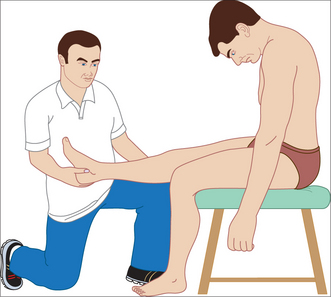
FIGURE 34.8 Slump test. The patient sits on the edge of the couch, then in a stepwise fashion, increased stretch is introduced as follows: i) the patient slumps forward, ii) then flexes the neck, iii) then straightens the leg, iv) then dorsiflexes the foot. Purportedly, if any back or leg pain reproduced so far is eased when the neck is then extended, and/or the ankle plantar flexed, then neuromeningeal irritation, rather than hamstring pain, is invoked (adopted from Kenna & Murtagh23).
Special tests of spinal dysfunction have been described for the lumbar and pelvic region, including many labelled as sacroiliac tests. A combination of tests shows best utility regarding sacro-iliac joints (SIJ) dysfunction.24
INVESTIGATION
Careful thought is needed before investigating a patient. Concern regarding increasing levels of radiological intervention, especially CT scanning, has become topical.25,26 The risk of exposure to significant ionising radiation, for questionable clinical benefit along with wasting of limited healthcare resources, should be of concern to the healthcare practitioner and consumer alike. By asking: ‘How will this investigation influence my management, what are the chances of a significant finding and will this test detect it?’, unnecessary tests are likely to be avoided.
Red flag conditions and their appropriate investigations are shown in Table 34.2. Plain films have a reasonable pick-up rate (Table 34.3

